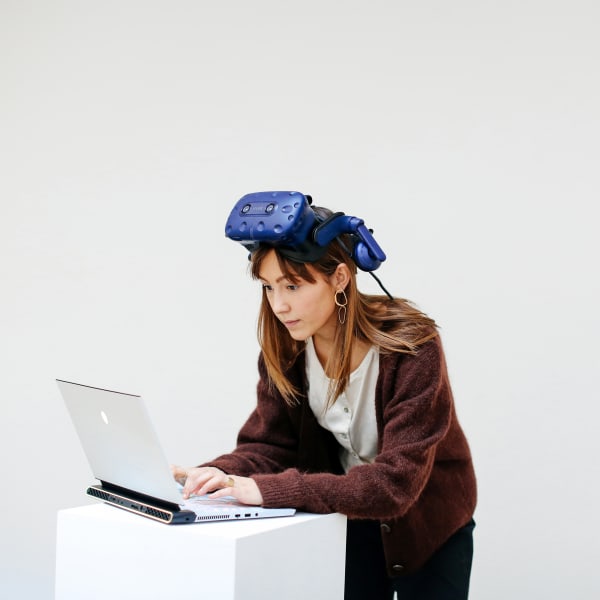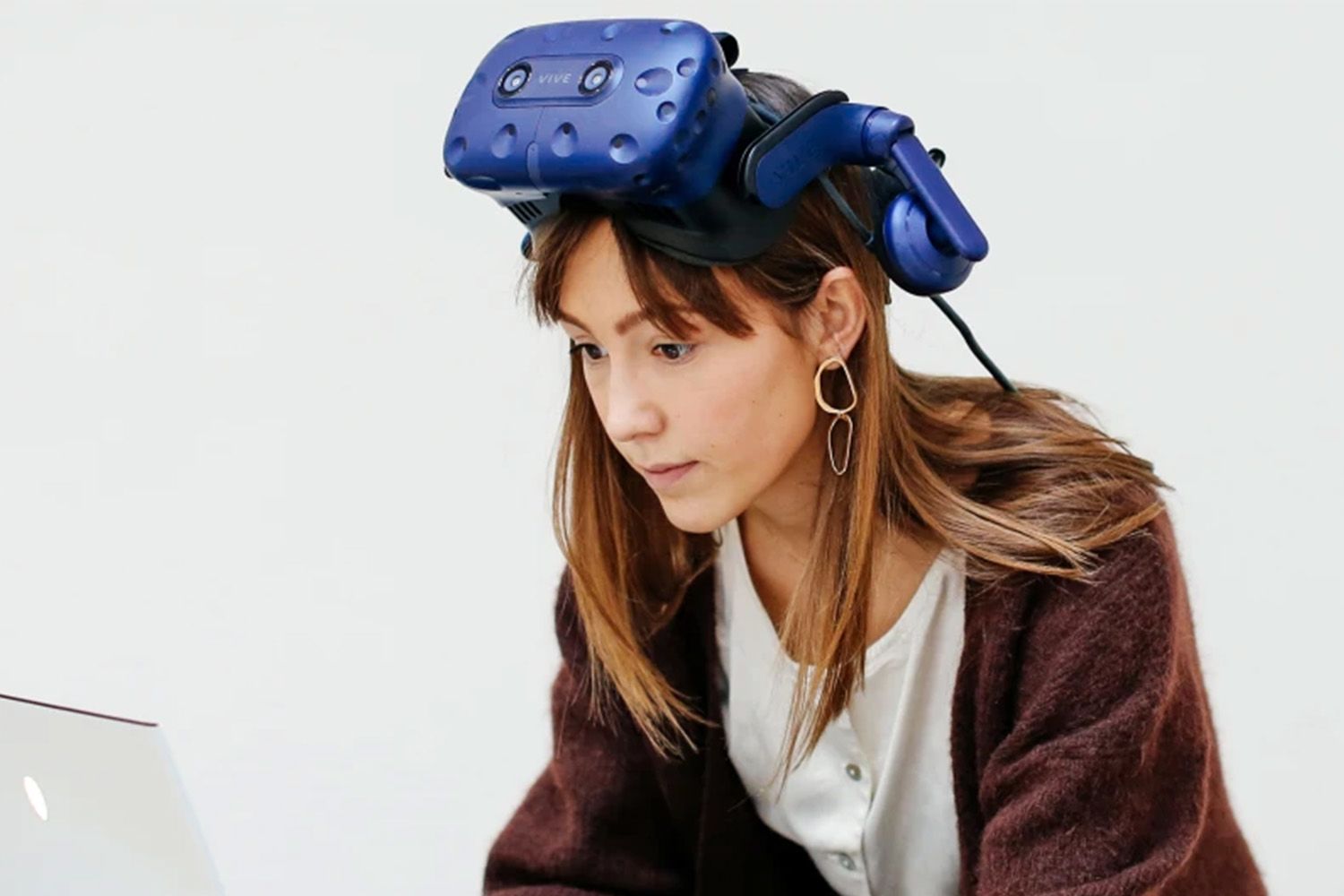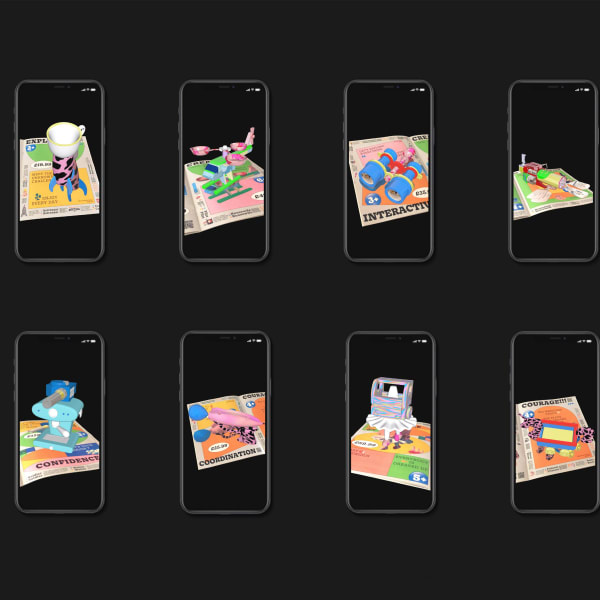
Understanding fashion and the blockchain

- Written byCarys Thomas
- Published date 09 February 2023

Worldwide spending on blockchain solutions is expected to grow to an estimated 19 billion US dollars by the year 2024 (ResearchGate).
The growing popularity of blockchain technology is something that comes as no surprise to associate lecturer, Mimi Nguyen. Mimi currently teaches on the MA Innovation Management Course at Central Saint Martins, and runs two exciting short courses with a focus on fashion and the metaverse and blockchain art:
We caught up with Mimi to find out more about the potential of blockchain technology and discuss what students can expect from her short courses.
Before starting her PhD studies, Mimi Nguyen studied data science in Warsaw and new media art at the University of Arts Berlin. She went on to work for a number of tech consulting companies including Accenture and the Boston Consulting Group before taking up a place to study MA Innovation Management at Central Saint Martins.
Mimi’s interest in both technology and new media art later brought her to Imperial College London, where she began her PhD research. “For many years I struggled to find a way to bring these two worlds together,” she says, “but eventually I decided to pursue a PhD at Imperial College London in the Faculty of Engineering.”
Now an assistant professor here at UAL, Mimi works with students on a range of projects that utilise design thinking to reimagine services and products. “The aim is to explore creative technologies and challenge traditional notions of technological transformation through the lens of innovation management,” she explains.
Digital currency: where it all began
“After the financial crisis in 2008, we realised how vulnerable centralised financial institutions were,” says Mimi, “and this prompted an anonymous creator, under the pseudonym of Satoshi Nakamoto, to propose a peer-to-peer digital currency system that would eliminate the need for intermediaries.”
“A decade later, the application of blockchain technology has expanded beyond just cryptocurrency systems,” Mimi tells us. “It is now also used to create authenticity and provenance registries, which has been widely adopted in the digital art world.”
The potential of blockchain technology is perhaps what makes it so exciting. As Mimi notes, it has “the potential to revolutionise many different industries and has already had a significant impact on the way we conduct transactions and track data. It is now used as an infrastructure technology for a variety of purposes such as supply chain tracking and reward systems."
What is a blockchain?
“A blockchain is a decentralised registry book that records all transactions and tracks the history of digital assets in a peer-to-peer system (distributed ledger technology),” says Mimi.
“Since every transaction is stored on a public encrypted database, each new input has to be verified by all participating machines in the network (nodes),” Mimi explains. “This eliminates the need for a middleman (transparency) and guarantees inability to modify or alter existing records (immutability). Any new changes have to be approved by an egalitarian voting process among participating parties in the self-governing system (consensus mechanism).”
This sort of technology has many useful applications in the creative industries because it offers a reliable means of storing digital assets. “The infrastructure is ideal to store information such as ownership history (provenance) and authenticity (traceability) of digital assets,” says Mimi. “This can help to protect against counterfeiting and fraud. It can also facilitate more efficient and secure payment processes.”
Mimi discusses the role of the blockchain in the creative industries
The rise of the NFT
Students on Mimi’s Fashion and Metaverse Short Course gain an insight into the role of the NFT (non-fungible token). Research suggests that NFT sales are growing rapidly, with many artists and musicians now using the technology to sell their work.
“NFTs are digital assets that are uniquely identified and verified on a blockchain,” says Mimi. “These assets can represent articles, music, artworks, digital designs such as collectibles and cards, game assets, digital fashion items and certificates.”
“NFTs have allowed artists to sell their digital art directly to collectors, bypassing traditional galleries and middlemen,” Mimi tells us. “This has created new opportunities for artists to monetise their work and led to some high-profile sales of digital art for millions of dollars.”
“The use of NFTs is still in its early stages,” says Mimi, “and it remains to be seen what their long-term impact will be. However, they have the potential to significantly disrupt traditional markets and create new opportunities for creators and collectors of digital assets.”
Read more about the future of digital fashion design.
Short courses
Mimi’s Fashion and Metaverse Online Short Course explores the relationship between digital fashion, blockchain and the metaverse. “The course covers the opportunities and challenges presented by the use of virtual and augmented reality in the fashion industry,” she says, “as well as the role of digital fashion in shaping the metaverse”.
The course also addresses the potential for innovation and entrepreneurship in this space, including the development of new business models and the use of blockchain technology. The focus is on developing the skills and knowledge needed to thrive in the industry.
On the Blockchain Art and NFTs Short Course, students develop an understanding of the fundamentals of blockchain technology and its applications in the art industry, such as the use of NFTs in the authentication and sale of digital and physical artworks.
“Students engage in lectures, discussions, and hands-on exercises that allow them to dive deep into the key concepts,” says Mimi. These learning experiences help students understand blockchain technology and begin to develop their own project ideas.
Feeling inspired? You may also be interested in our other short courses with a focus on digital fashion:
- Introduction to Fashion Metaverse Technologies Short Course
- Creative CLO3D for Absolute Beginners Online Short Course
- Introduction to CLO3D and 3D Fashion Design Online Short Course
We offer a huge range of short courses for all levels of experience. Check out our upcoming short courses to find out what's coming up.
